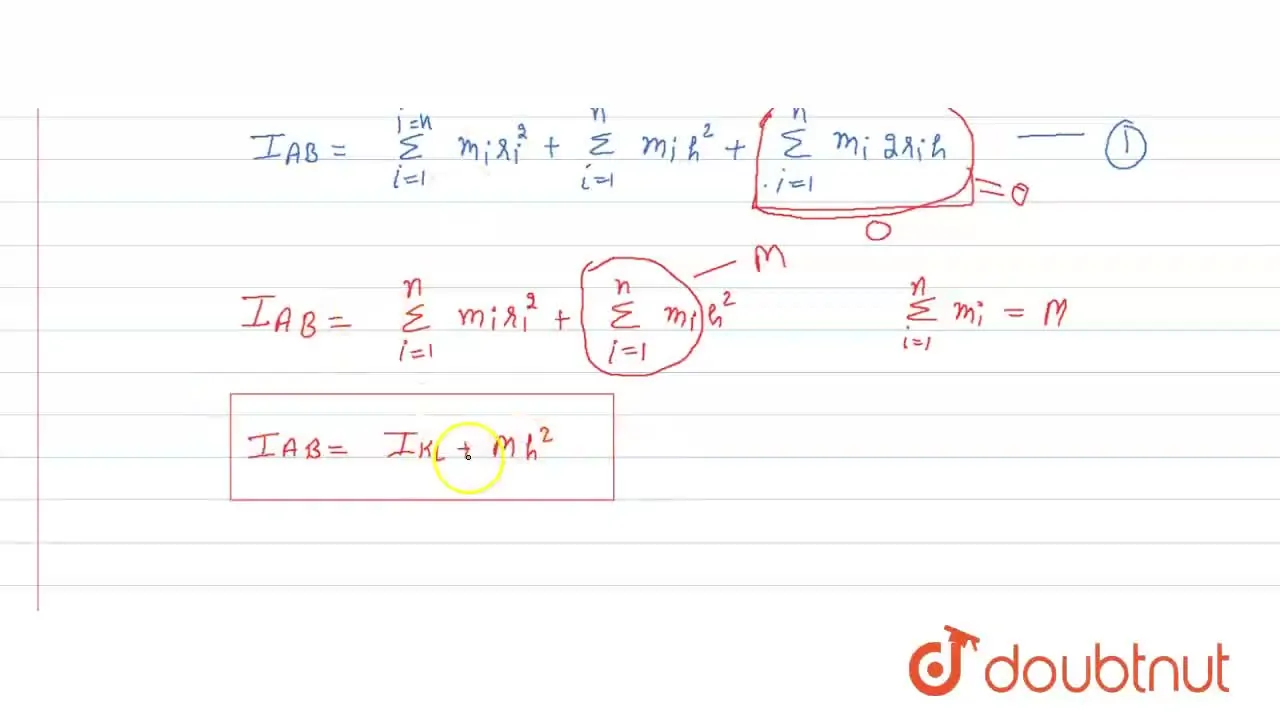Prove the theorem of parallel axes.Solution in Punjabi
Video Solution
Text Solution
Statement: "The moment of inertia of rigid body about any axis is equal to its moment of inertia about a parallel axes passing through its centre of mass plus product of mass of the body and the square of the perpendicular distance between the axes.

IAB=IC+Mh2
where IAB = Moment of inertia about AB axes.
IC = Moment of inertia about the axes passing through the centre.
M = Total mass of the body.
h = Perpendicular distance between the two axes.
Proof: Let AB be axis about which moment of inertia is to be calculated. DЕ be the axis through centre of mass. Now consider a particle of mass m at F at distance x from C. Then IC = moment of inertia of m about DE axis = mx2 .
IC = Total moment of inertia of body = Emx2
Moment of inertia of body about AB axis is
IAB=∑m(x+h)2
=∑m(x2+h2+2hx)
IAB=∑x2+∑mh2
Here 2 hx term is dropped, because about axis mass has zero moment.
Also ∑m = M = Total mass of body and IC=∑mx2
Therefore, IAB=IC+Mh2 is the required proof for parallel axis theorem.
|
Updated on:21/07/2023
Similar Questions
(a) Prove the theorem of perpendicular axes.
(b) Prove the theorem of parallel axes.View SolutionState and prove the principle / Theorem of parallel axes.
08:25View SolutionState Theorem of parallel Axes
04:19View SolutionMoment OF Inertia||Parallel Axes Theorem||Perpendicular Axes Theorem
51:09View SolutionState (i) parallel axes theorem and (ii) perpendicular axes theorem.
07:48View SolutionState theorem of parallel axes.
03:17View SolutionState and prove parallel axes theorem.
View SolutionProve the theorem of parallel axes.
View Solution


